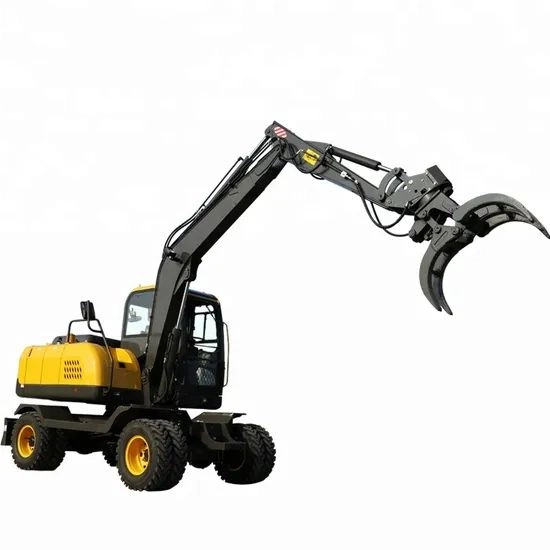The failure rates of wheeled excavators and crawler excavators are affected by various factors such as the operating environment, work intensity, and maintenance conditions. It is difficult to simply determine "which has a higher failure rate". However, there are differences in their failure characteristics and high-incidence parts, which can be analyzed from the following perspectives:

- Failure characteristics of wheeled excavators
Wheeled excavators use tires for movement and are more suitable for scenarios with hardened surfaces such as road transportation and urban road operations. Their high-incidence failure points are mainly concentrated in:
- Travel system: Tires, as vulnerable parts, are prone to punctures, scratches, and excessive wear on roads with many gravels and sharp objects. Components such as wheel reducers and drive shafts are affected by road bumps, causing seals to age and leak oil, and connecting bolts to loosen easily.
- Brake system: When frequently driving on roads or performing heavy-load operations, brake pads wear quickly, and brake fluid is easily deteriorated by temperature, which may lead to reduced braking effect or abnormal noise.
- Hydraulic system pipelines: Due to the greater vibration caused by tire movement, the joints of hydraulic pipelines are prone to loosening, which may lead to leakage in the long run.
- Failure rate in applicable scenarios: If operated in environments that match the design of wheeled excavators, such as urban roads and flat sites, and maintained in a timely manner, the failure rate is relatively stable. However, forced use on muddy and rough roads will significantly increase the failure of the travel system.
- Failure characteristics of crawler excavators
Crawler excavators rely on crawlers for movement and are suitable for complex environments such as mines, muddy areas, and soft sites. Their high-incidence failure points are concentrated in:
- Crawler and chassis system: Crawler plates and track links are prone to fracture and deformation when working on hard rocks or sharp objects. Top rollers, bottom rollers, and idlers are prone to oil leakage and jamming due to long-term contact with soil and gravel (requiring frequent cleaning and lubrication). The seals of the crawler tension cylinder are easily worn, resulting in oil leakage.
- Hydraulic system: During heavy-load excavation (such as rock operations), hydraulic pumps, motors, and pipelines bear high pressure. Improper operation (such as overloading) may easily cause wear of hydraulic components or pipeline bursting.
- Chassis structural parts: Under long-term bumpy and heavy-load environments, the welding points of the frame, boom, and crawler connection parts are prone to fatigue cracks.
- Failure rate in applicable scenarios: When working in complex terrain, the wear and failure probability of the crawler system is higher than that of the travel system of wheeled excavators. However, in the environment that matches its design, the overall stability is strong, and the failure rate of core components (such as engines and hydraulic pumps) is not necessarily higher.
- Comprehensive comparison and conclusion
- Environmental adaptability is the key:
The failure rate of wheeled excavators will increase significantly when used in non-design scenarios (such as muddy and heavy-load conditions). Frequent driving of crawler excavators on flat and hardened roads will aggravate crawler wear and increase the failure rate. - Maintenance has a greater impact:
If wheeled excavators neglect tire maintenance and brake system inspection, or crawler excavators fail to clean crawler impurities and add lubricating grease in a timely manner, their respective high-incidence failures will occur in advance. - Summary: In their respective adapted operating environments, there is little difference in the failure rates of the two. If used out of the designed scenarios, the failure rates of the travel system of wheeled excavators and the crawler chassis of crawler excavators will become their respective "shortcomings". Therefore, when choosing a model, it is necessary to first match the operating environment, and then reduce the probability of failure through standardized maintenance.





